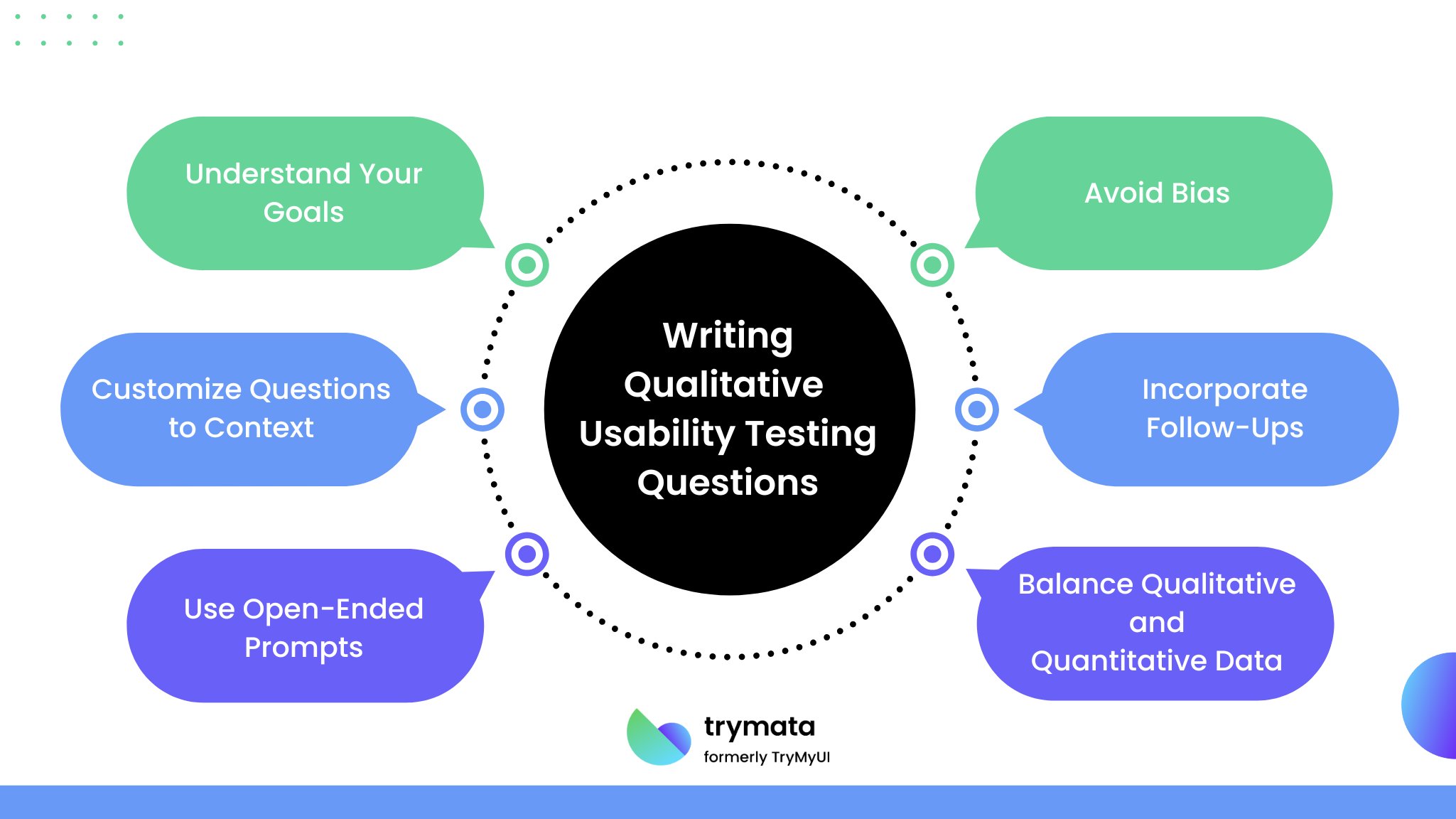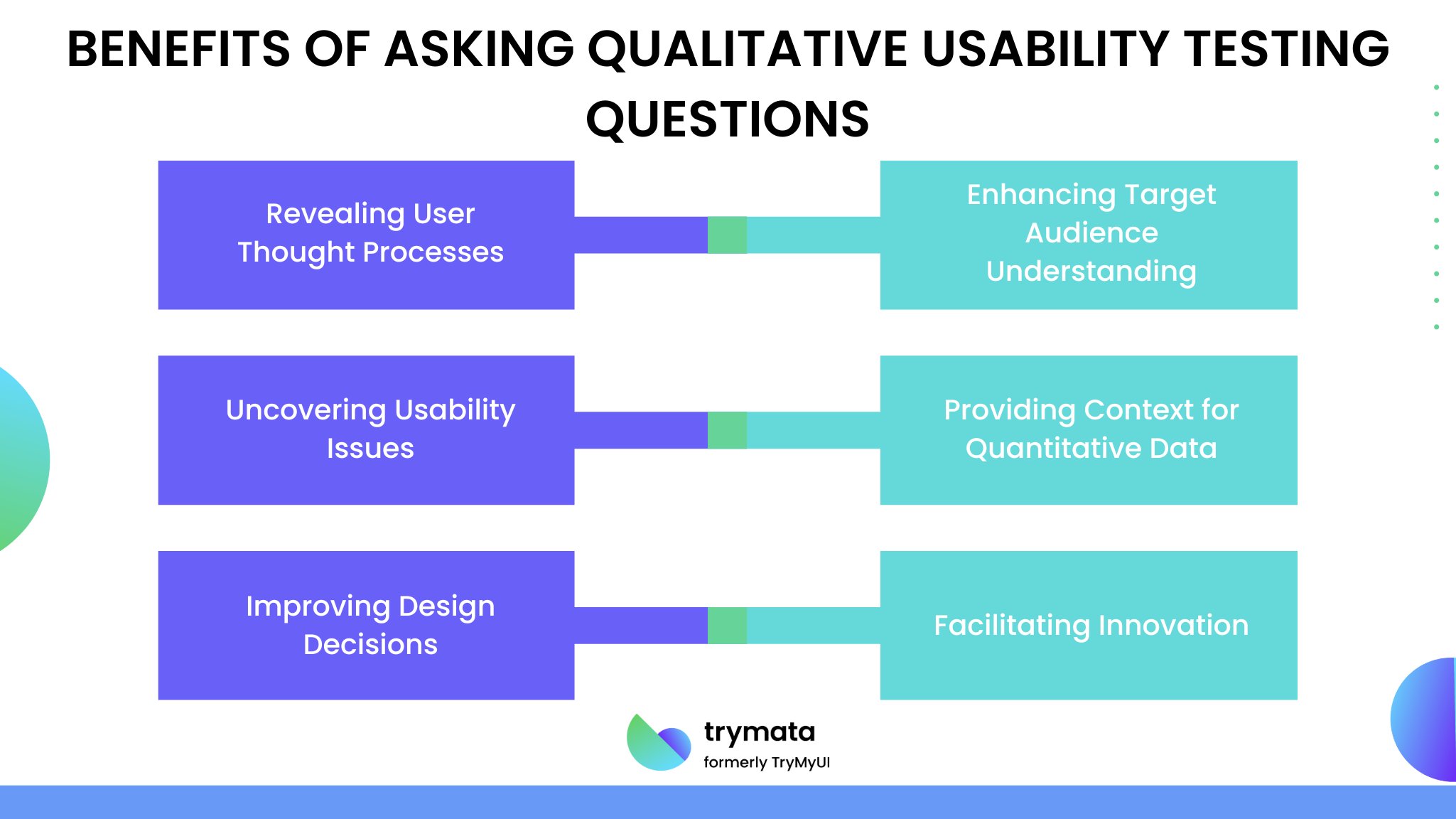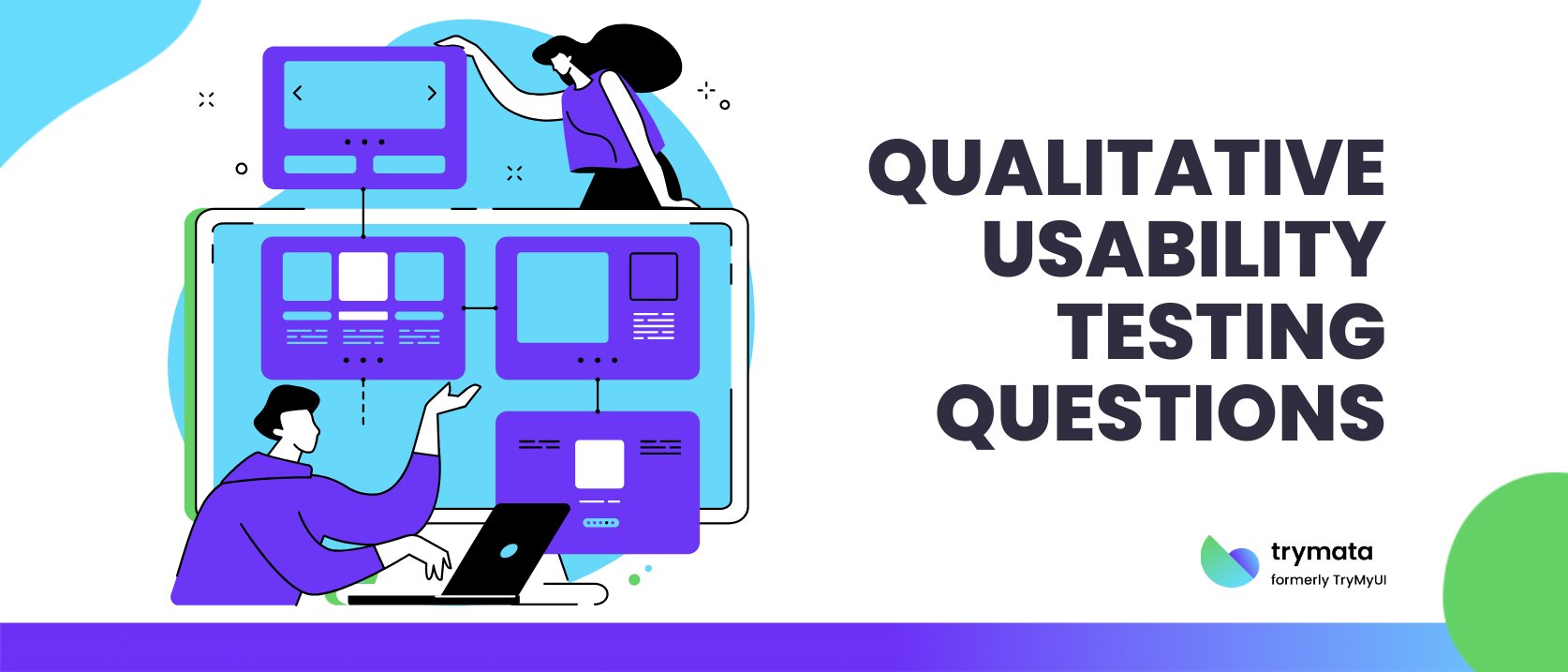Qualitative usability testing questions are key to understanding the deeper aspects of user experience. This blog introduces their importance, exploring how open-ended queries uncover user behaviors, thought processes, and pain points.
Whether you’re evaluating early prototypes or refining post-launch features, these questions provide actionable insights to improve usability, align with user expectations, and enhance satisfaction.
What are Qualitative Usability Testing Questions?
Qualitative usability testing questions are designed to explore users’ experiences, thoughts, and behaviors during a usability testing session. Unlike quantitative usability testing methods, which focus on metrics like time on task or error rates, qualitative questions aim to uncover user behavior, thought processes, and pain points through open-ended queries and observations.
Incorporating usability testing into your development process allows you to gather actionable insights about how real users interact with your product. Whether it’s a website usability testing session or a moderated usability testing scenario for a mobile app, these questions help identify usability issues and areas for improvement.
Why Use Qualitative Usability Testing Questions?
Qualitative questions help uncover the following:
- User Behavior: Understand how users navigate your interface and perform tasks.
- Pain Points: Identify obstacles users face during specific tasks.
- Thought Processes: Learn how users think while interacting with your product.
- User Expectations: Determine whether your product meets their needs and expectations.
- Actionable Insights: Gain detailed, subjective feedback that can inform design changes.
Unlike multiple-choice questions or statistical data, qualitative usability testing questions allow you to dive deeper into the “why” behind user behavior.
Writing Qualitative Usability Testing Questions
Creating effective qualitative usability testing questions is essential for uncovering actionable insights that improve user experience. These questions should be designed to explore users’ motivations, challenges, and thought processes while interacting with a product. Here are key steps to consider:

- Understand Your Goals: Define what you want to learn from the testing session. Are you identifying pain points, evaluating navigation, or assessing overall usability?
- Customize Questions to Context: Consider the user’s background, the product being tested, and the specific tasks involved. Customizing questions ensures relevance and clarity.
- Use Open-Ended Prompts: Encourage detailed responses by avoiding yes/no questions. Examples include:
- “What were your initial thoughts about this feature?”
- “Can you walk me through your decision-making process during this task?”
- Avoid Bias: Phrase questions neutrally to prevent influencing user feedback. For instance, replace “Did you find this feature easy to use?” with “How did you feel about using this feature?”
- Incorporate Follow-Ups: Be prepared to ask follow-up questions to delve deeper into user feedback, such as “What specifically made this task challenging?”
- Balance Qualitative and Quantitative Data: While focusing on qualitative insights, consider pairing questions with usability metrics like task completion rates or System Usability Scale (SUS) scores for a comprehensive analysis.
By carefully crafting your questions, you can collect meaningful user feedback that highlights areas for improvement and supports user-centric design decisions. This approach ensures your product meets user needs effectively.
When to Use Qualitative Usability Testing Questions
Qualitative usability testing questions are best utilized during phases where deep, nuanced insights are needed to improve the user experience. Here are key scenarios for their use:
Early Stages of Development
Incorporating qualitative questions early in the design phase is essential for identifying potential pain points and usability issues. For example, these questions can help evaluate wireframes or prototypes by focusing on user navigation and interaction.
Exploring User Perceptions
Use qualitative questions to understand how users feel about a product or feature. This is particularly useful when gathering navigation, layout, or functionality insights during website usability testing or mobile app development.
Testing Complex Features
When introducing new or intricate functionality, qualitative questions help uncover barriers and identify areas for improvement. For instance, they can reveal how users approach tasks on an e-commerce website or interact with a pricing page.
Enhancing Iterative Design
Qualitative usability testing fits seamlessly into iterative design processes. After addressing initial pain points, use these questions in subsequent testing sessions to validate improvements and ensure alignment with user expectations.
Validating User Satisfaction
Towards the end of the development process, qualitative questions can gauge overall user satisfaction, helping ensure the product is ready for launch. They provide insights into lingering pain points and highlight areas where final refinements are needed.
By Utilizing qualitative usability testing questions at the right time, teams can gather valuable insights that improve user experiences, reduce development costs, and create products that resonate with their target audience.
Examples of Qualitative Usability Testing Questions
Here are 20 qualitative usability testing questions to inspire your sessions:
- What were your initial impressions when you saw this interface?
- Can you describe how you approached completing this task?
- What part of this process was most challenging, and why?
- Was there anything surprising or unexpected about using this feature?
- How would you describe the navigation experience on this page?
- What elements of the design helped you complete your task?
- What aspects of this feature felt unclear or confusing?
- What would it be if you could change one thing about this product?
- How did you feel about the overall speed and responsiveness?
- Were there any points where you felt stuck? Can you explain what happened?
- What additional information would have made this easier for you?
- How does this product compare to similar tools you’ve used?
- What would you expect to happen if you clicked on [This]?
- Can you describe the steps you took to find [This]?
- How confident did you feel while completing this task?
- What did you like most about this experience, and why?
- Did anything about the layout or design distract you?
- What improvements would make this process more intuitive?
- Was the language or terminology used easy to understand?
- Do you feel this product meets your expectations? Why or why not?
Benefits of Asking Qualitative Usability Testing Questions
Asking qualitative usability testing questions is essential for understanding user behavior and improving the overall user experience. Here are the key benefits of this approach:

Revealing User Thought Processes
Open-ended questions encourage participants to articulate their reasoning, thought processes, and emotions while interacting with a product. This insight helps teams understand how users perceive the interface and identify areas that need improvement.
Uncovering Usability Issues
By exploring “why” users behave a certain way, qualitative questions can identify subtle pain points or navigation challenges that may not surface in quantitative testing. These issues often directly impact user satisfaction and task success.
Improving Design Decisions
The actionable feedback collected helps designers prioritize changes based on real user needs. This ensures that development efforts align with user expectations, making the product more intuitive and user-friendly.
Enhancing Target Audience Understanding
Qualitative user testing questions delve into users’ preferences, goals, and challenges, allowing teams to tailor products more effectively for their target audience. This improves overall market fit and product adoption.
Providing Context for Quantitative Data
When paired with metrics like the System Usability Scale (SUS), qualitative insights provide context for the numbers, offering a comprehensive view of the user experience. This combination ensures balanced decision-making.
Facilitating Innovation
Qualitative questions often yield insights that inspire creative solutions to usability problems. They encourage teams to think beyond surface-level fixes and address deeper user needs.
By incorporating qualitative usability testing questions into the development process, teams gain valuable insights that address usability issues and foster a meaningful connection with their users, ultimately driving satisfaction and loyalty.
Conclusion
Qualitative usability testing questions are vital for uncovering deep insights into user behavior, identifying usability problems, and ensuring a user-friendly product experience. By incorporating usability testing into the development process and focusing on actionable insights, businesses can create products that resonate with their target audience and improve overall usability.
Whether you’re conducting in-person sessions, remote testing, or unmoderated usability testing, the key is to write usability testing questions that encourage real users to share honest, detailed feedback. With the right approach, usability testing helps teams identify pain points, enhance user satisfaction, and align with user expectations.




